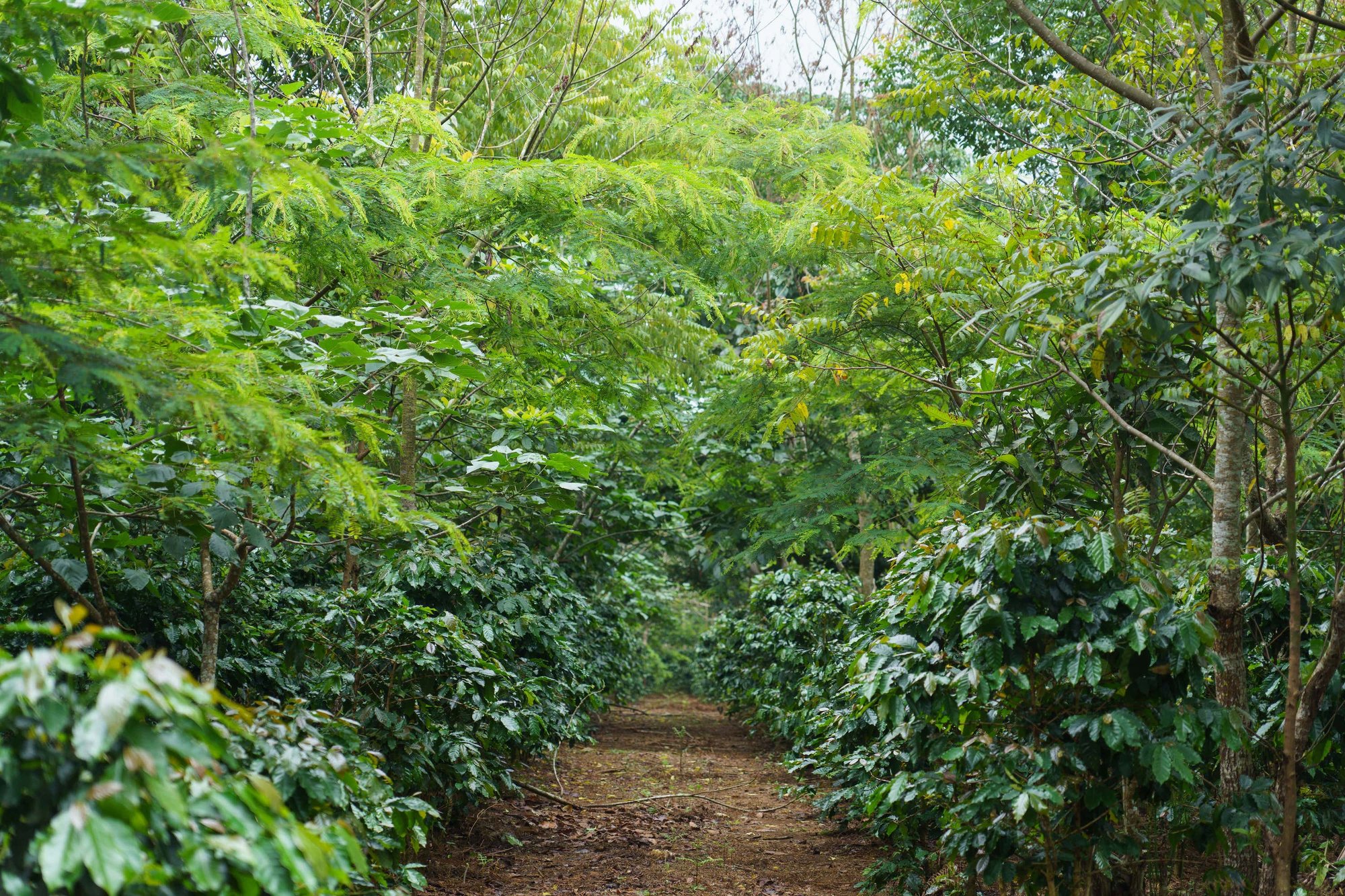Carbon Sequestration
Expand tree cover, increase carbon storage

Slow Forest's agroforestry is a shining example of sustainable coffee cultivation, emphasizing the numerous benefits of regenerative agroforestry. This innovative approach integrates coffee plants with diverse tree species, creating a thriving ecosystem that yields multiple benefits.
Agroforestry is a sustainable land management practice that mimics the natural structure of a forest. It offers a multitude of advantages, including:
- Climate restoration. Trees capture carbon dioxide, mitigating climate change.
- Biodiversity enhancement. Agroforestry provides habitats for a variety of wildlife, including birds, insects and mammals. This fosters a balanced ecosystem, essential for long-term coffee cultivation.
- Soil health improvement. Agroforestry prevents erosion, promotes nutrient cycling and improves moisture retention, resulting in fertile, resilient soils that enhance the quality of coffee beans.
- Coffee flavor enhancement. Coffee plants evolved under the canopy of trees, and mimicking this environment further enhances the coffee's flavor and quality.
- Deforestation prevention. Slow Forest's agroforestry approach addresses the major issue of deforestation caused by large-scale monoculture coffee farms. It often requires clearing vast areas of forests, contributing to habitat destruction and climate change.
Slow Forest's commitment to sustainability is evident in our comprehensive forestry manual, which details guidelines for planting and maintaining a diverse agroforestry system. We also promote the planting of endangered tree species, demonstrating our commitment to broader ecological preservation.
In a world facing pressing environmental challenges, Slow Forest's approach sets a benchmark for the sustainable future of coffee.
Our agroforestry strategies in the Bolaven Plateau, a key coffee-growing area in Laos, prioritize work in four areas.
2,994 Ironwood (Ostrya spp.)
2,000 White tempt
3,010 Resin tree
2,500 Black rosewood (Dalbergia spp.)
2,482 Burma padauk (Pterocarpus macrocarpus)
2,000 Agarwood (Aquilaria spp.)
2,000 Pink tempt
2,107 Box fruit (Syzigium spp.)
2,000 Fujian cypress (Fokienia hodginsii)
2,013 Jackfruit (Artocarpus heterophyllus)
2,031 Neem tree (Azadirachta indica)
1,978 Cassia tree (Cassia spp.)
2,000 Tembusu (Fagraea fragrans)
2,000 Java cassia (Cinnamomum burmannii)
1,998 Golden shower (Cassia fistula)
2,000 Pomelo (Citrus maxima)
2,000 Guava (Psidium guajava)
2,000 Mango (Mangifera indica)
2,000 Papaya (Carica papaya)
2,000 Sapota (Manilkara zapota)
1,000 Macadamia (Macadamia integrifolia)

Expand tree cover, increase carbon storage

Multi-strata farm, mimicking nature for flourishing plant, insect, and bird life

Revitalize farm soil, restore natural balance and nutrient density

Balancing productivity, profitability, and quality to inspire monoculture conversion
Slow tastings now available in Denmark, Finland and Germany. Expanding to new regions soon.